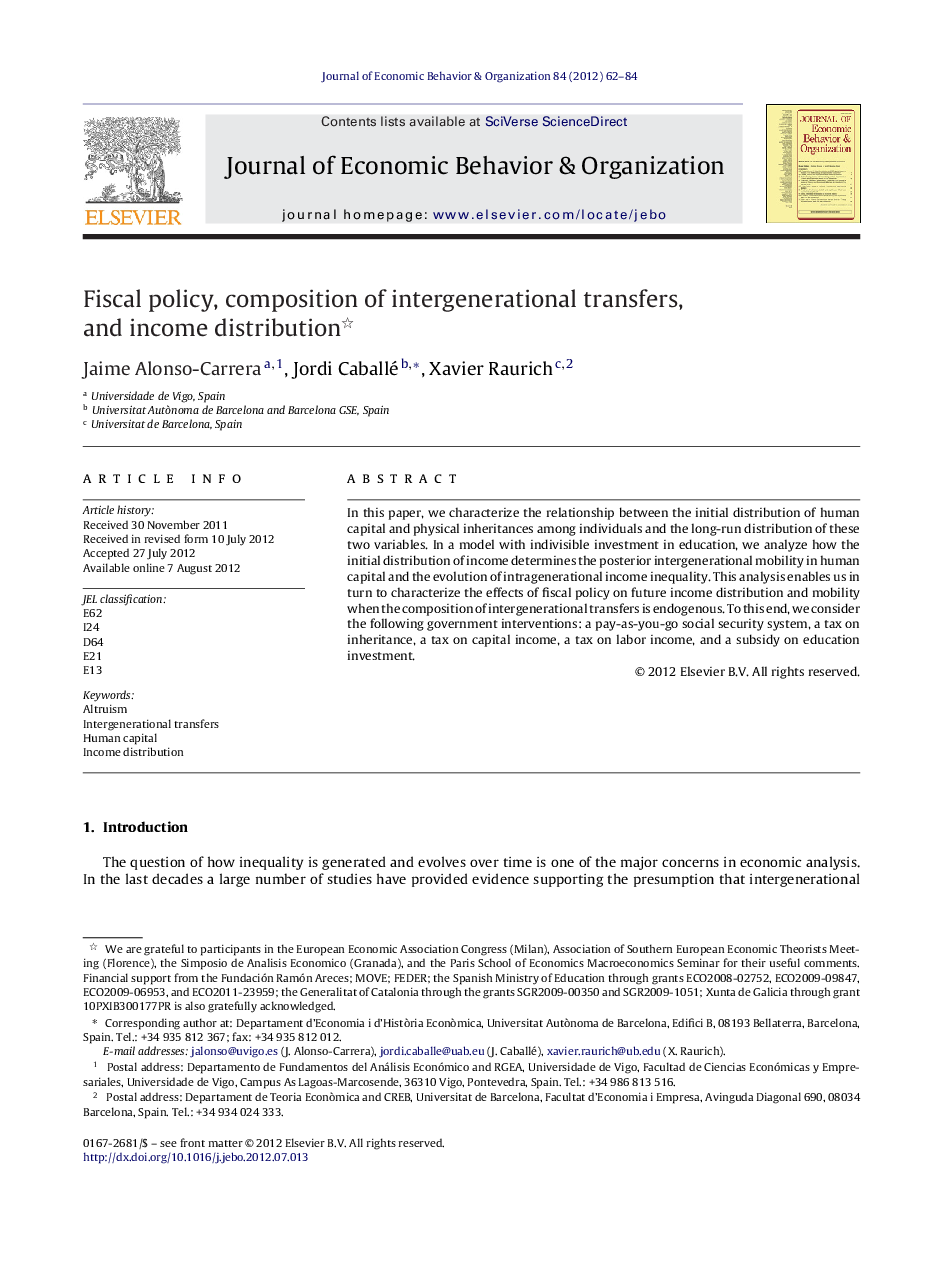| Article ID | Journal | Published Year | Pages | File Type |
|---|---|---|---|---|
| 883871 | Journal of Economic Behavior & Organization | 2012 | 23 Pages |
In this paper, we characterize the relationship between the initial distribution of human capital and physical inheritances among individuals and the long-run distribution of these two variables. In a model with indivisible investment in education, we analyze how the initial distribution of income determines the posterior intergenerational mobility in human capital and the evolution of intragenerational income inequality. This analysis enables us in turn to characterize the effects of fiscal policy on future income distribution and mobility when the composition of intergenerational transfers is endogenous. To this end, we consider the following government interventions: a pay-as-you-go social security system, a tax on inheritance, a tax on capital income, a tax on labor income, and a subsidy on education investment.
► The initial composition of wealth determines the evolution of income distribution. ► Investment in human capital is exposed to borrowing constraints and indivisibilities. ► Our model exhibits upward mobility in human capital during the transition. ► Taxes on inheritances or on labor income reduce human capital accumulation. ► We analyze the effects of different taxes on inequality and mobility in human capital.
